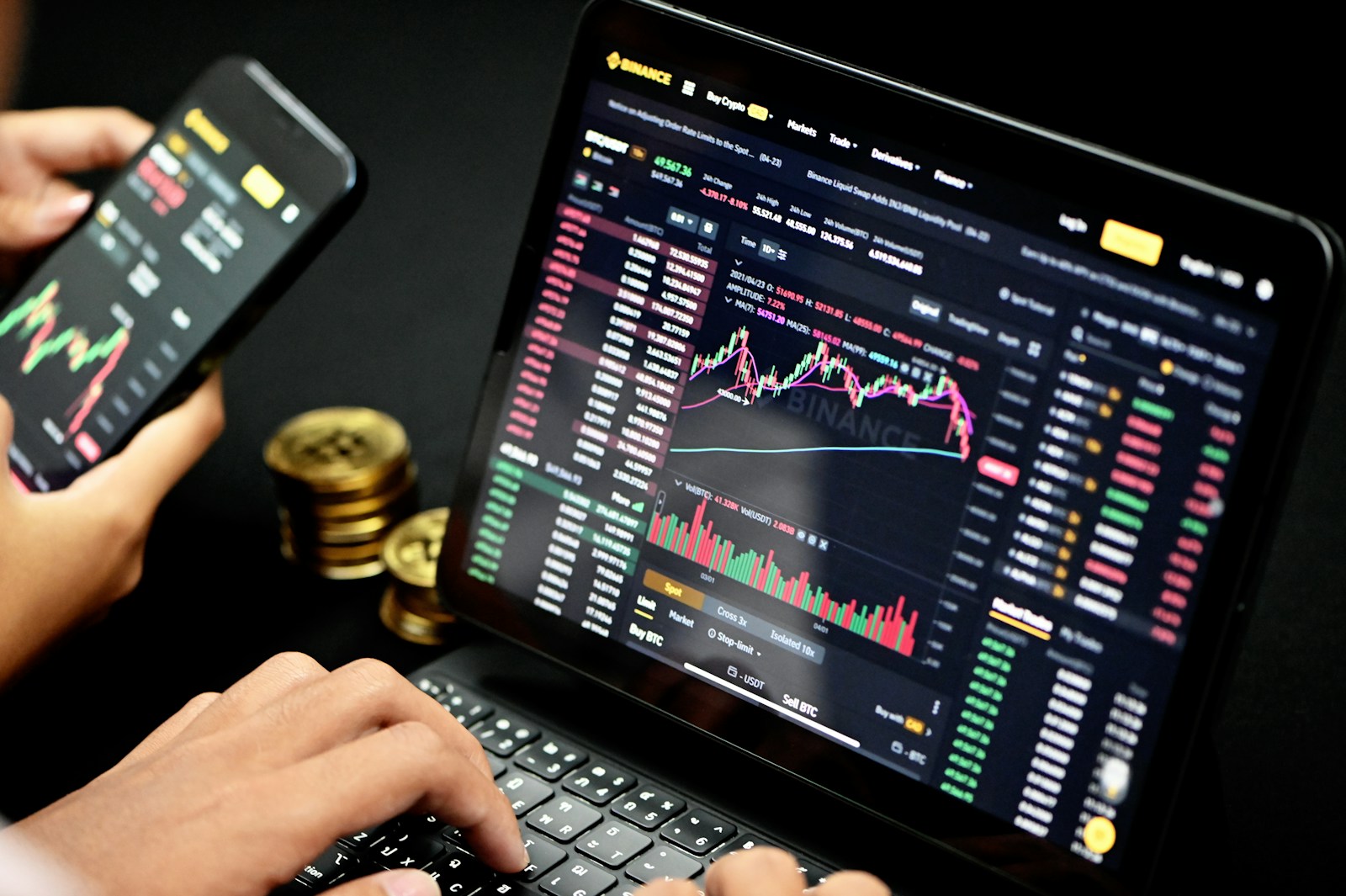
Adopting a robust framework for the legal acknowledgment of blockchain tokens transforms them from mere data entries into enforceable claims over intangible assets. Jurisdictions like Switzerland and Singapore have begun integrating token recognition into their property laws, enabling holders to exercise exclusive control, transfer rights, and secure collateral through smart contracts. This shift is critical as global token market capitalization surpassed $2 trillion in early 2024, underscoring the need for clear legal parameters that protect investor interests and streamline dispute resolution.
Establishing formal acknowledgment of these asset representations requires harmonizing traditional ownership concepts with decentralized ledger technologies. For example, recent rulings in Delaware courts have set precedents by treating certain non-fungible tokens as personal property under state law, facilitating their use in estate planning and lending. Such developments highlight how regulatory clarity can unlock institutional adoption while mitigating risks tied to custody and fraud.
Looking ahead, integrating comprehensive statutes that codify rights associated with tokenized holdings will define the future of value exchange on digital platforms. Will regulators prioritize uniform standards or allow fragmented approaches across borders? The answer will shape whether tokenized instruments serve merely as speculative items or mature into foundational components of global asset management systems.
Understanding Crypto as Digital Property Rights [Crypto Fundamentals basics]
The recognition of blockchain-based tokens as assets with enforceable entitlements is transforming how ownership is conceptualized in the digital realm. This framework allows individuals and entities to hold, transfer, and verify control over units that represent value or utility without traditional intermediaries. For instance, non-fungible tokens (NFTs) provide unique identifiers linked to artwork or collectibles, creating provable scarcity and exclusive claims verified by cryptographic proofs. Unlike conventional assets, these units operate on decentralized ledgers, ensuring transparency and resistance to censorship.
Legal acknowledgment of such tokenized entitlements varies significantly across jurisdictions but is increasingly reflected in regulatory updates worldwide. Countries like Switzerland and Singapore have adopted clear guidelines classifying token holdings under existing securities or property laws, while others lag behind, causing fragmentation in enforcement and user protection. Practical implications include the ability to assert ownership rights in courts or leverage tokens as collateral within DeFi protocols. Therefore, understanding the interplay between technical design and legal frameworks is critical for participants seeking secure asset management.
Technical Foundations and Asset Classification
At its core, the architecture enabling token-based claims relies on cryptographic keys controlling access rather than physical possession. Public-private key pairs authenticate transactions on distributed ledgers such as Ethereum or Solana, where smart contracts execute predefined rules governing asset behavior. These programmable units can represent fungible coins like stablecoins pegged 1:1 with fiat currencies or non-fungible tokens embodying unique attributes stored via metadata hashes.
The classification into fungible versus non-fungible impacts rights associated with each unit–fungibles often serve as currency substitutes facilitating exchange, while NFTs denote singular items with distinct provenance. Projects like CryptoKitties demonstrated early market demand for verifiable uniqueness; more recent platforms extend this concept to real estate deeds or intellectual property licenses encoded on-chain. Developers must consider interoperability standards (ERC-20 vs ERC-721/1155) to ensure compatibility across wallets and marketplaces.
From an economic perspective, these tokens function similarly to securitized assets by granting holders specified claims backed by underlying value streams or exclusivity terms embedded within contract code. This convergence of finance and software introduces novel mechanisms for fractional ownership, automated dividend distribution, and programmable inheritance conditions hitherto impossible with analog instruments.
Legal Recognition Challenges and Future Outlook
Despite technological advancements enabling robust asset representation on blockchains, legal systems face challenges adapting doctrines developed around tangible goods to intangible ledger entries. Questions arise regarding jurisdiction applicability when custody nodes span multiple countries or when pseudonymous actors obscure identity verification processes. Moreover, disputes over token validity necessitate evidentiary standards that courts are still developing.
- Regulatory clarity: Agencies such as the SEC issue evolving guidance distinguishing between investment contracts and utility tokens.
- Property attribution: Establishing ownership entails linking wallet addresses with identifiable persons under anti-money laundering norms.
- Enforcement mechanisms: Cross-border cooperation remains limited for confiscating illicitly obtained digital assets.
The trajectory suggests increasing integration of these units into mainstream financial infrastructure alongside enhanced legal codifications. Recent legislative proposals advocate for registries recognizing tokenized entitlements as equivalent to traditional deeds or shares. Such progress could facilitate broader adoption by institutional investors demanding legally sound instruments supporting compliance requirements.
In conclusion, viewing blockchain-issued units through the lens of transferable entitlement constructs offers a comprehensive approach to managing intangible holdings securely and transparently. Continued evolution hinges on harmonizing technical innovations with regulatory frameworks worldwide–balancing flexibility inherent in programmable assets against predictable protections expected from established property regimes. Engaging both technologists and lawmakers will be essential to unlock full potential embedded within this paradigm shift.
How Blockchain Secures Ownership
Blockchain establishes an immutable ledger that records asset possession with unprecedented transparency and security. By leveraging cryptographic proofs, it ensures that ownership is verifiable and tamper-resistant without relying on centralized authorities. This decentralized registry allows participants to confirm the legitimacy of asset control, whether it’s tokens representing financial instruments or non-fungible items linked to intellectual property.
Legal recognition of blockchain-based ownership varies globally but is gaining traction as jurisdictions adapt frameworks to incorporate distributed ledger technology. For instance, Switzerland and Singapore have enacted regulations acknowledging tokenized assets as legally enforceable rights under certain conditions. Such developments provide a stronger foundation for using blockchain not only as a record-keeping tool but as a basis for contractual enforcement and dispute resolution in courts.
Technical Foundations Enabling Secure Asset Control
The core mechanism that secures asset possession on blockchains is public-key cryptography combined with consensus algorithms. Ownership corresponds to control over private keys, which generate digital signatures validating transactions transferring assets. Networks like Ethereum employ proof-of-stake consensus to finalize state changes efficiently while maintaining resistance against censorship or fraudulent alterations. This architecture eliminates single points of failure inherent in traditional registries.
Moreover, smart contracts automate compliance with pre-defined ownership conditions, facilitating programmable transfers and escrow arrangements without intermediaries. The recent implementation of EIP-1559 on Ethereum enhanced fee predictability, improving user experience in executing these contracts reliably. Projects such as Propy have demonstrated practical use cases where real estate titles are registered on blockchain, reducing paperwork and fraud risks by binding legal documents directly to cryptographically secured identifiers.
Future scalability solutions like sharding and Layer 2 protocols aim to increase throughput without compromising security guarantees critical for asset custody. For example, Polygon’s sidechains provide faster transaction finality while anchoring states back to Ethereum mainnet for trustworthiness. These innovations address concerns about latency and cost that previously hindered widespread adoption of blockchain registries in high-value markets like art or luxury goods provenance tracking.
Recognition frameworks integrating off-chain data enhance the reliability of blockchain ownership models by linking physical assets or legal entities with on-chain tokens. Oracles such as Chainlink supply verified external information into smart contracts, enabling dynamic responses based on real-world events–insurance claims triggered automatically upon verification of damage reports illustrate this synergy effectively. Such hybrid systems expand applicability beyond purely native digital objects toward comprehensive stewardship over complex portfolios spanning multiple asset classes.
Tokenization Process Explained
The tokenization process converts tangible and intangible assets into programmable units that represent ownership within a blockchain-based framework. This transformation enables fractional ownership, allowing multiple stakeholders to hold shares in high-value assets such as real estate, fine art, or intellectual property. For instance, platforms like RealT tokenize U.S. real estate properties, offering investors a proportional claim on rental income and asset appreciation without traditional intermediaries. Such mechanisms provide transparency and immutable proof of stake, which are critical for broad recognition and trust in emerging markets.
Implementing tokenization requires a robust legal framework to ensure enforceability and compliance with jurisdiction-specific regulations. Countries like Switzerland and Singapore have advanced legislation recognizing tokens as legitimate representations of asset claims, bridging the gap between conventional asset management and innovative ledger technology. This legal acknowledgment mitigates risks of disputes over ownership rights and enhances market liquidity by enabling seamless transferability on decentralized exchanges or regulated marketplaces.
Technical Aspects and Market Implications
At the technical level, token standards such as ERC-20 for fungible assets and ERC-721/ERC-1155 for non-fungible tokens (NFTs) facilitate standardized issuance and interoperability across wallets and platforms. The choice between these depends on the asset type; fungible tokens are suited for commodities or shares where each unit is identical, whereas NFTs represent unique items like collectibles or patents. Recent case studies reveal that tokenized assets can reduce settlement times from days to minutes while lowering transaction costs by up to 70%, significantly impacting financial infrastructure efficiency.
The future of this technology hinges on expanding institutional adoption alongside enhanced regulatory clarity. While retail investors currently dominate many tokenized asset markets, institutional players increasingly explore this space due to its potential for portfolio diversification and risk management. However, challenges remain regarding custody solutions, valuation standards, and cross-border recognition of ownership claims. Continuous advancements in smart contract auditability and integration with existing financial systems will likely dictate the pace at which tokenized representations become mainstream components of global asset ecosystems.
Legal Status of Crypto Assets
The recognition of tokenized assets as legitimate objects of ownership varies significantly across jurisdictions, affecting their treatment within existing legal frameworks. Several countries have integrated these instruments into their civil law systems, thereby granting holders enforceable claims analogous to traditional property rights. For example, Switzerland’s Financial Market Supervisory Authority (FINMA) classifies tokens under a threefold model–payment, utility, and asset tokens–each carrying distinct legal implications regarding possession and transferability. This structured approach enables clearer delineation of ownership and protection mechanisms.
Despite progress in regulation, many regions still lack comprehensive statutes addressing the legal nature of blockchain-recorded holdings. The absence of uniformity creates challenges for market participants seeking secure title over such intangible goods. In the United States, courts have started to recognize certain digital units as commodities or securities depending on context, but questions persist around custodial responsibilities and enforceability of contractual terms embedded in smart contracts. This fragmented environment highlights the need for harmonized frameworks that reconcile technological innovation with established principles of asset control.
Ownership and Legal Enforcement
Establishing ownership over cryptographically secured tokens requires reliable identification and proof mechanisms beyond mere ledger entries. Legal systems traditionally rely on registries or physical documentation to assert control; however, blockchain technology introduces decentralized ledgers as novel evidentiary tools. The case study of the 2021 Mt. Gox bankruptcy proceedings illustrates complexities where asset recovery depended heavily on verifying blockchain transactions alongside conventional legal evidence. Courts grappled with interpreting whether possession of private keys equates to lawful ownership under applicable insolvency laws.
Furthermore, the enforceability of usage rights encoded in programmable assets demands scrutiny. Smart contracts automate execution but may conflict with statutory regulations or consumer protections if unregulated. Jurisdictions like Singapore have begun codifying guidelines that recognize these protocols’ binding nature while preserving recourse options against malfunction or fraud. Such initiatives exemplify how regulatory bodies can integrate emerging technologies without compromising foundational legal safeguards.
The classification of tokenized holdings also influences taxation and reporting obligations, adding layers to compliance requirements for holders and intermediaries alike. For instance, the European Union’s recent Markets in Crypto-Assets Regulation (MiCA) proposal sets out explicit definitions and operational standards intended to standardize treatment across member states by 2024. These efforts aim to reduce ambiguity surrounding asset categorization–distinguishing between investment-like tokens subject to securities laws and utility-focused units primarily used within specific platforms.
In conclusion, advancing a coherent global regime hinges upon reconciling distributed ledger characteristics with longstanding tenets governing asset transfer and protection. Ongoing dialogues among regulators, industry stakeholders, and legal scholars will determine how effectively this integration proceeds while safeguarding investor confidence and market stability amid evolving technological paradigms.
Transferring Digital Property Rights
Efficient transfer of ownership over tokenized assets requires a robust legal and technical framework that guarantees clear verification and enforceability. Blockchain platforms like Ethereum enable secure peer-to-peer transactions by recording transfers immutably, reducing reliance on intermediaries. However, the legal recognition of these transfers varies significantly across jurisdictions, which impacts enforceability and dispute resolution processes. For instance, Switzerland’s progressive stance on recognizing blockchain-based asset transfers as legally binding contrasts with more cautious approaches in other countries.
The transfer process involves not only updating ledger entries but also confirming that the transferee acquires all associated entitlements without encumbrances. Smart contracts automate conditional transfers–such as escrow releases upon milestone completion–enhancing transactional certainty. An example is real estate tokenization projects where fractional ownership stakes are traded via protocols adhering to regulatory compliance standards, integrating KYC/AML checks directly into the transfer mechanism.
Technical and Legal Interplay in Asset Transfer
From a technical perspective, transferring rights involves cryptographic signature validation and consensus verification within distributed ledgers to prevent double-spending or unauthorized changes. This ensures non-repudiation and traceability of each transaction event. Legally, jurisdictions developing tailored statutes for decentralized asset management strengthen investor confidence by providing recourse options in cases of fraud or theft. Delaware’s recent amendments to corporate law explicitly accommodate blockchain-recorded share issuances as valid property interests exemplify this trend.
Market adoption accelerates when frameworks integrate seamlessly with existing financial infrastructure. For example, some security token offerings (STOs) utilize hybrid models combining on-chain asset representation with off-chain custody services governed by traditional contracts. These arrangements address concerns about private key loss or platform insolvency by offering fallback remedies under prevailing commercial laws, illustrating how legal structures complement technological solutions.
Looking ahead, standardized protocols for cross-border transfers will be critical to support global liquidity of digital holdings while preserving regulatory compliance. Organizations such as the International Organization for Standardization (ISO) are working on unified identification and transfer standards aiming to reduce friction and ambiguity in international transactions. As markets mature, establishing interoperable frameworks that balance decentralization benefits with legal clarity will define the trajectory of asset exchange mechanisms over the next decade.
Protecting Crypto Against Theft: A Strategic Perspective
Establishing robust mechanisms for securing ownership of blockchain-based assets must be prioritized to safeguard value and maintain trust. This involves integrating advanced cryptographic protocols such as multi-signature wallets, hardware security modules (HSMs), and threshold signature schemes that minimize single points of failure. Recent statistics show that over $1.9 billion in token value was lost or stolen in 2023 alone due to insufficient protective measures, underscoring the urgency for enhanced defenses aligned with evolving threats.
The convergence of technological innovation and regulatory clarity will define the trajectory of safeguarding these intangible holdings. Emerging legal frameworks across jurisdictions are increasingly recognizing tokens as bona fide possessions, granting enforceable claims akin to traditional assets. For instance, the European Union’s Markets in Crypto-Assets Regulation (MiCA) aims to establish uniform standards that explicitly outline custodial responsibilities and incident reporting requirements–setting a precedent that could harmonize protections globally.
Implications and Future Developments
Ownership assurance no longer rests solely on private key secrecy; it demands integrated solutions combining on-chain transparency with off-chain legal enforceability. Smart contracts can automate compliance checks and transfer restrictions, reducing fraud vectors while enabling programmable control over assets. Consider how decentralized autonomous organizations (DAOs) deploy time-locked multisig arrangements to mitigate insider risks–these technical constructs provide templates for institutional-grade custody models.
Looking ahead, interoperability protocols promise seamless asset migration without compromising provenance or custodial guarantees, which is critical for portfolio diversification strategies involving multiple blockchains. Layer 2 scaling solutions further reduce transaction costs and latency, encouraging wider adoption of secure asset management tools even among retail holders.
- Legal codification: Clear statutory definitions will empower courts to adjudicate disputes involving token misappropriation effectively.
- Technological integration: Hybrid on-chain/off-chain security schemas will become standard practice for high-value holdings.
- User education: Enhanced awareness campaigns combined with user-friendly interfaces can drastically lower human-error-induced breaches.
The synergy between technical safeguards and an evolving jurisprudential environment will ultimately determine the resilience of these intangible holdings against theft. Stakeholders should actively engage in shaping policy discussions while adopting best-in-class cryptographic practices tailored to their risk profiles. Only through this dual approach can the ecosystem mature into a framework where ownership is not just recorded but also respected and legally protected worldwide.








